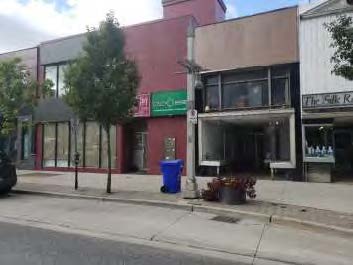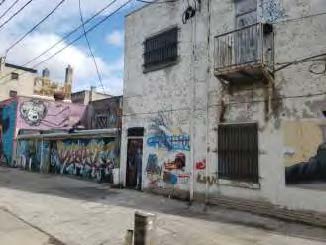Front of store is "situationally accountable" however the alley-oriented rear side presents conditions somewhat enticing for criminals to try and take advantage of


MOST NOTABLE, POTENTIAL "TRIGGER" of RISK & VULNERABILITY
The assessment revealed one very distinct and potentially significant "trigger" of risk and vulnerability that could act as a catalyst for problematic behaviour; namely, loitering. This must be recognized and acknowledged if any recommended course of action is to be successful at establishing and maintaining safety and security.
LOITERING: A Key Incubator of Problematic Behaviour
Without a doubt, loitering represents a fundamental root cause for elevated safety concerns and reduced perceptions of safety and comfort by all stakeholders. When examined within the physical situational context of the property, this is an issue that must be kept on the "awareness radar screen". The ongoing presence of loitering acts as an "incubator" to potentially more dangerous situations that impair safety. The problem is particularly pronounced in circumstances where questionable individuals attend for lengthier periods, taking advantage of discreet locations within close proximity of the property that may be more difficult to regularly observe by employees, security staff, police, or other users.
What Causes Loitering to Establish and Continue?
The conditions for loitering to first establish itself, then be sustained over time depend heavily on four distinct risk factors which, in any combination, greatly increase vulnerability of the space and various users of that space as well. Sometimes only one risk factor is at play but if it is strong, it can still lead to a sustainment of loitering. Any combination of the 4 factors will typically increase risk and vulnerability on an ascending scale. These factors are as follows: